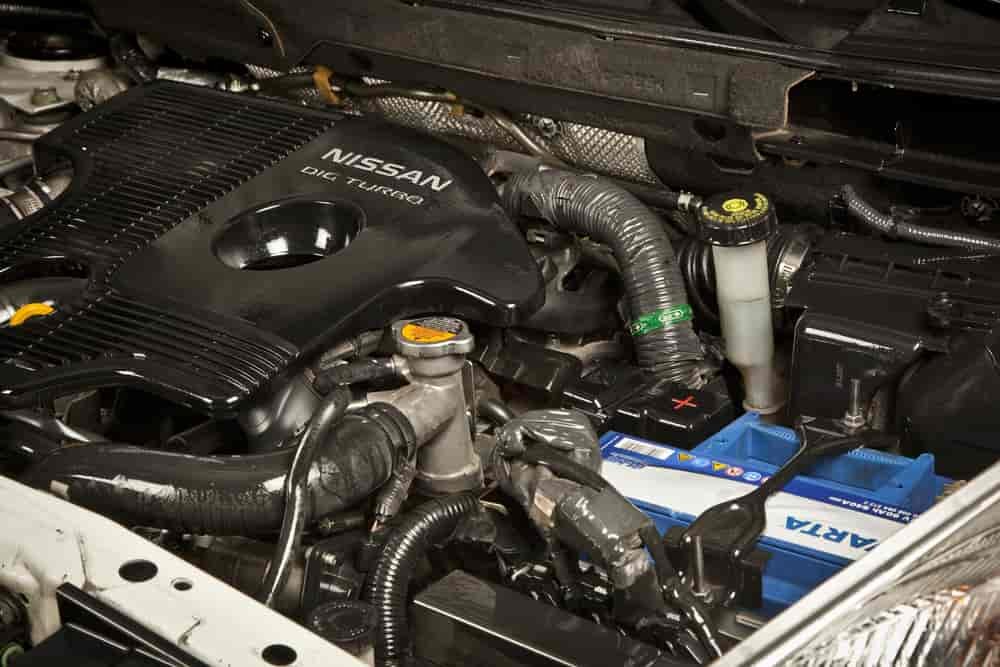You are driving your Nissan Altima on a regular morning commute when the engine suddenly revs higher than usual, but the car barely moves forward. That moment of hesitation is often the first warning sign of transmission slipping, a problem that affects thousands of Altima owners who use Nissan’s Continuously Variable Transmission system.
Transmission slipping in a Nissan Altima can cause more than just a rough driving experience. It can lead to overheating, increased fuel consumption, and expensive mechanical repairs if it is not addressed quickly. When your car reaches between sixty thousand and one hundred thousand miles, taking care of the CVT becomes more important than ever.
In 2025, many Altima models from the previous decade are now showing signs of wear. Understanding why transmission slipping happens and how to fix it will help you keep your vehicle safe and reliable for years to come. In this complete guide, you will learn about the main causes, early symptoms, and smart fixes that can restore your Nissan Altima’s smooth and confident performance.
What Does Transmission Slipping Mean in a Nissan Altima?
When a Nissan Altima experiences transmission slipping, it means that the power from the engine is not being transferred to the wheels as it should be. The most common sign is when the engine revs increase, but the car does not accelerate at the same rate. Many drivers describe it as a feeling that the car is “hesitating” or “losing grip” while shifting or cruising.
For Nissan Altima models equipped with a Continuously Variable Transmission, or CVT, this issue can be more noticeable. The CVT is designed to provide smooth acceleration without traditional gear shifts, but when internal parts begin to wear or the transmission fluid becomes degraded, the system can no longer maintain the correct pressure. As a result, the car may struggle to maintain speed or respond slowly to throttle input.
Transmission slipping is often a warning that the CVT system is under stress. It can be caused by low fluid levels, overheating, or internal component wear. Ignoring these signs can lead to more serious damage and higher repair costs later on. Recognizing what slipping feels like is the first step in diagnosing and preventing further transmission failure in your Nissan Altima.
Common Causes of Nissan Altima Transmission Slipping
Transmission slipping in a Nissan Altima can be traced to several underlying issues. Understanding these causes helps drivers take the right action before the problem becomes serious or costly to repair.
Low or degraded transmission fluid is the most common reason. The CVT in the Altima relies on a steady flow of high quality fluid to create pressure and transfer power efficiently. When the fluid level drops or the oil becomes contaminated with debris, it can no longer lubricate or cool the system properly. This leads to heat buildup and slipping during acceleration.
Another frequent cause is a faulty transmission control module, which manages how the CVT adjusts pulley ratios and pressure. When the module sends incorrect signals, the transmission may hesitate or fail to maintain the correct gear ratio.
Overheating is also a major factor. The CVT system generates constant friction, and without proper cooling, it can overheat, causing the metal components to expand and slip.
Finally, worn pulleys or belts inside the CVT can no longer grip effectively, resulting in a noticeable loss of traction between the engine and the wheels. In some cases, software issues or outdated firmware from the manufacturer can also make the transmission behave unpredictably.
Knowing these causes helps Altima owners make smarter repair decisions and extend the life of their CVT system.
Key Symptoms You Shouldn’t Ignore
Recognizing the early symptoms of transmission slipping in a Nissan Altima can save you from expensive repairs and sudden breakdowns. The signs often appear gradually, but they become more obvious as the CVT system starts to fail.
One of the first symptoms is engine revving without proper acceleration. You may notice the RPM increasing sharply while the car barely gains speed. This happens because the transmission is not maintaining the right pressure between the pulleys and the belt.
Another common sign is delayed or jerky gear engagement when shifting from park to drive or during acceleration. The car may hesitate for a second before moving forward. Some drivers also report a whining or humming noise coming from the transmission area, which indicates that the internal components are struggling to maintain smooth operation.
A burning smell is a serious warning that the transmission fluid is overheating or breaking down. If you see the Check Engine Light or experience a noticeable loss in fuel efficiency, it is likely that the CVT sensors are detecting slipping or irregular pressure levels.
For accurate diagnosis, using an OBD2 scanner to check for CVT-related error codes can help you identify the exact source of the issue. Acting quickly when these symptoms appear can prevent a minor problem from turning into a full transmission failure.
Smart Fixes for a Slipping Nissan Altima Transmission
Once you have identified the symptoms of transmission slipping, the next step is to apply the right solutions. Some fixes can be performed at home, while others require professional service. Acting early can save both time and money.
The first and simplest fix is to check and replace the transmission fluid. If the fluid appears dark, thick, or has a burnt smell, it is no longer providing the correct lubrication and cooling. Replacing it with the manufacturer-recommended CVT fluid can immediately improve performance.
A software update or reprogramming at a Nissan dealership can also help. Many Altima models have received firmware updates that improve how the CVT manages pressure and shifting behavior. If your car has not been updated recently, this step can make a noticeable difference.
Installing an additional transmission cooler is another smart option, especially if you drive in hot climates or heavy traffic. It helps regulate temperature and reduces the chance of overheating.
If slipping continues, you may need a professional CVT rebuild or replacement. Although costly, this ensures that worn pulleys, belts, and seals are replaced with new components, restoring the system to factory-level performance.
Combining these solutions with regular inspections gives your Nissan Altima the best chance to recover its smooth and reliable driving feel.
Estimated Repair Costs in 2025
Repairing a slipping transmission in a Nissan Altima can vary widely in cost depending on the cause of the problem, the model year, and the mechanic you choose. In 2025, as parts and labor costs continue to rise, it is important to understand the financial range before committing to a repair.
A transmission fluid change is the most affordable option, usually costing between one hundred fifty and three hundred dollars. This service can sometimes resolve minor slipping issues if the fluid was the main cause.
For more complex problems, such as worn pulleys or damaged belts, a CVT rebuild may be necessary. This repair typically ranges from two thousand five hundred to four thousand dollars and involves replacing internal components and reprogramming the transmission system.
A full transmission replacement is the most expensive repair, often costing between four thousand and six thousand dollars. Although this solution provides a new or factory-refurbished unit, it is usually recommended only when the damage is beyond repair.
Before choosing a repair option, always compare quotes from different certified mechanics and confirm whether your vehicle is covered by Nissan’s extended CVT warranty. Making an informed decision can help you balance cost, reliability, and long-term performance.
How to Prevent Transmission Slipping in the Future
Preventing transmission slipping in your Nissan Altima is much easier and more affordable than repairing it. Consistent maintenance and smart driving habits can help your CVT system last longer and perform more smoothly over time.
Start by changing the transmission fluid regularly, ideally every forty to sixty thousand miles. Always use the CVT fluid recommended by Nissan, as the wrong type can affect lubrication and cooling. Keeping the fluid clean and at the correct level prevents excessive heat and friction, which are the main causes of slipping.
Avoid driving aggressively or towing heavy loads for long periods. Sudden acceleration and high-speed driving put extra strain on the transmission system. If you often drive in stop-and-go traffic or hot weather, consider installing a transmission cooler to help manage temperature and protect internal parts.
You should also inspect and clean the transmission cooler and radiator during regular maintenance visits. Dust, debris, or clogged air passages can trap heat and cause the CVT to overheat.
Finally, update your transmission software whenever Nissan releases a new version. These updates often include performance improvements and fixes for known issues, helping you prevent future slipping and extend your vehicle’s reliability.
By following these preventive steps, you can maintain a smoother, safer driving experience and avoid costly transmission repairs down the road.
Conclusion
Transmission slipping in a Nissan Altima is more than just an inconvenience. It is a warning that your car’s most important mechanical system may be under stress. By learning how to recognize the signs early, understand the common causes, and apply the right fixes, you can prevent minor problems from turning into costly repairs.
Regular maintenance remains the key to avoiding transmission failure. Simple steps such as checking the CVT fluid, keeping the system cool, and updating the software can significantly improve the reliability of your vehicle. When issues do appear, taking action quickly not only saves money but also protects your safety on the road.
If your Nissan Altima feels like it is slipping or hesitating during acceleration, do not ignore it. Schedule a diagnostic check or consult a certified Nissan technician to identify the cause before the damage becomes severe. With the right care and attention, your Altima can continue to deliver the smooth and efficient performance that Nissan drivers value most.

